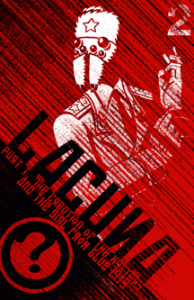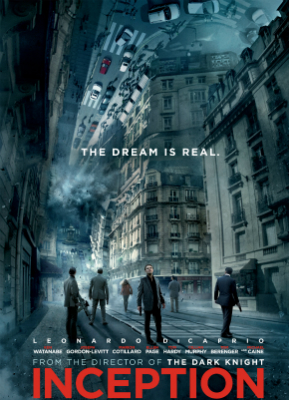You Should Be Playing…
Lacuna, Part I: The Creation of the Mystery and the Girl from the Blue City
Human consciousness was never quite what it seemed. The legends of ancient Greece posited our cognition was a cruel joke by the gods, while their philosophers argued that it was our single greatest tool and the source of immortality. Throughout history, theories of the mind varied and changed between a battleground for good and evil, the only incontrovertible proof of existence, or a dangerous animal needing to be leashed. Freud and Jung argued about the roots of the human mind, trying to see past the immediate and into the very roots that all humans shared. With slow, hesitating steps, we got closer and closer through the years to the Blue City, but even when we opened that door, we were not ready for the Girl waiting on the far side of our collective unconsciousness. She was ready for us, however.
 Lacuna, Part I: The Creation of the Mystery and the Girl from the Blue City is an experimental roleplaying game predicated on conspiracy and mystery. It is the first, and currently only, book of the Lacuna setting. It was created and written by Jared Sorenson, and published in the Daedalus e-zine in 2004. A “second attempt” was published in 2006 under his Memento Mori Theatricks brand, and that’s the most widely available version of the game. Released as a more complete version of the game, it retails for $15 and can still be found in brick and mortar gaming stores. Amazon is currently out of stock for it, but DriveThruRPG offers digital copies for $10.
Lacuna, Part I: The Creation of the Mystery and the Girl from the Blue City is an experimental roleplaying game predicated on conspiracy and mystery. It is the first, and currently only, book of the Lacuna setting. It was created and written by Jared Sorenson, and published in the Daedalus e-zine in 2004. A “second attempt” was published in 2006 under his Memento Mori Theatricks brand, and that’s the most widely available version of the game. Released as a more complete version of the game, it retails for $15 and can still be found in brick and mortar gaming stores. Amazon is currently out of stock for it, but DriveThruRPG offers digital copies for $10.
The game Lacuna is named after a particular effect within its world, but the word itself encapsulates the experience of the game perfectly. A lacuna is a gap within the writing of a primary source text, for which there is no existing completion. A lacuna also refers to extended silences in music, a gap in a person’s memory, and a situation where there is simply no applicable law to a situation. Lacuna plays in the very gaps of human consciousness, society, and the world itself, rooting firmly in the unknown spaces between the clearly delineated and known.
What is known about Lacuna can be given very quickly. Not long into the future, humanity has discovered that Jung’s theory of the collective subconscious is very much real, and that through drugs and hypnosis, people can be sent into the Blue City of the human subconscious. There, Mystery Agents of the Company excise entities called Hostile Personalities from criminals, leaving the subject a socially well-adjusted and docile member of society. They do this through something called the Lacuna Effect, creating a gap in the person where the socially negative traits once existed – an effect that can only be performed in the Blue City. There are other things in the Blue City, however, and they are not entirely benign. While there are more details in the text itself, they mean little without a greater context which is only hinted at.
It is the areas that Lacuna does not fill in that truly serve to define the game. Why is it that the collective human subconscious is a city? Who produces the drugs that allow the shared dreams? Who does the Company answer to, if anyone? How does the Lacuna Effect turn serial killers into normal, positive people? What sort of people does the Company recruit to be its Mystery Agents? Why are there spider-headed humanoids in Cold War East German police uniforms in the Blue City, and what do they want? What exactly is the Lacuna that lies in the deepest parts of the human unconsciousness and what happens to the Hostile Personalities sent there? What exactly is the mysterious Girl in the Blue City, and why is she so powerful there?
Gameplay
While it is not evident on the first read through, part of the experiment of Lacuna is how a Game Master will fill in the blanks of the setting with their narrative. While the setting is very slim on the information it provides, the details given are extremely powerful. Lacuna wears its influences on its sleeves, with echoes of The Matrix, Dark City, and Naked Lunch all clear to be seen.
Published years before Inception was released, it deserves mention as the best game to tackle the concept of hacking into a person’s mind through their dreams. The world of Lacuna resonates into the empty spaces, and the reader naturally finds their own answers without even realizing the questions exist. As such, no two GMs are likely to have the same exact vision of Lacuna.
Gameplay itself favors a small group willing to take a half-detailed game world and run with it. Character creation is handled similar to an interview process, with many of the character’s details randomly selected. Within the context of the game, this shows how the Company operates, assigning pseudonyms and Mentors arbitrarily.
Players are ideally expected to play Mystery Agents the same age and gender as they are, though both can be selected through other means. Age plays a role, as it ties into the central Heart Rate mechanic. Serving as both a health meter and a resource pool in the Blue City, Heart Rate has a Resting Value, a Target Value, and a Maximum Heart Rate Value. Age determines a Mystery Agent’s Target Heart Rate and Maximum Heart Rate, while gender determines their Resting Heart Rate. Older Mystery Agents generally have lower Target and Maximum Heart Rates, and women have a higher Resting Heart Rate than men.
Characters receive access to Techniques based on their Mentor within the Company, and they assign points to their Attributes, which reflect their abilities in the Blue City. Force serves as a combination of strength and willpower, allowing a Mystery Agent to enact their will on the City around them. Instinct covers both the ability to notice fine details in the Blue City as well as their ability to socially maneuver with the Personalities there. Access covers the Mystery Agent’s ability to requisition support and information from the nebulous Control on the far side of consciousness, granting them access to equipment and serving as the last line of defense against being killed. Each Attribute has an associated set of three Talents, and the player chooses one for their Mystery Agent.
Upon deployment, Mystery Agents are granted a Security Clearance (generally Blue), and are released into the narrative. As they succeed at their tasks, they earn Commendations which can be spent to learn more Techniques, influence Access rolls, or learn more Talents. Learn enough Talents, and a Mystery Agent will be promoted to Senior Mystery Agent. Senior Mystery Agents have slightly more pull in the world of the Blue City and the Company, but they eventually reach a point where they are once more promoted. At that point, they are not heard from or seen again. At least, not as a player character.
Mystery Agents start a mission at their Resting Heart Rates. Whenever failure is a possibility, a player rolls a number of six sided dice based on their Mystery Agent’s Attributes, with Talents providing extra dice. If they roll at least 11, they succeed at the action and the total roll is added to their Heart Rate. At their Target Heart Rate, the Mystery Agent is considered to be performing at their peak efficiency and enjoys several benefits as a result. Failing an action, or when they are above their Maximum Heart Rate, however, impairs the Mystery Agent’s Force or Instinct. These results can place a Mystery Agent – or the mission – in jeopardy. Reach Force or Instinct of zero, and the Mystery Agent must immediately succeed at an Access roll to get pulled from the Blue City, or they die there. Unlike a simple dream, death in the Blue City can be very real for the Mystery Agent, and failure to pull yourself out through Access leads to a very sudden demise in the real world.
Failure and internal conflict in the group also generates Static for the mission. Static serves as a means to measure the development of the story, as well as the strength of the things opposing the Mystery Agents. Static makes Access rolls difficult, and it attracts the attention of the more hostile denizens of the Blue City. Encountering unplanned Hostile Personalities can be dangerous, while encountering the mysterious Spidermen or, worse, The Girl herself, can spell certain death.
Static and Heart Rate compliment each other, driving the story forward in an increasingly frantic manner. As the mission continues, the odds of something terrible occurring increases. The chances of things spiraling out of control rise with every roll of the dice, and conflicting interests can quickly lead to a Mystery Agent being stuck in a bad situation with no options and no exit. Just pray that when the Spidermen come, you can find a place to run to.
Human minds fill in the blanks when our senses fail to grab what is, or is not, there. We continue forward, not noticing the missing bit of information until the time comes that we need it. Lacuna is an experiment in game design, whereby it’s providing the rules to build and play, but it only gives you pieces of the puzzle when it comes to the world itself. It challenges players and GMs to make sense of its many twists and idiosyncrasies, while hurtling onward at breakneck speed. Like a dream, Lacuna dumps you into the deep end of its story, where the parts are all familiar and you understand your role without needing to know the details. It is not the answers that Lacuna provides, but the questions that it inspires that move its story along.
You do not know where the train is going, but you know that when it stops, the real work begins.
And that is why you should be playing Lacuna.
David Gordon is a regular contributor to the site. A storyteller by trade and avowed tabletop veteran, he is always on the lookout for creative tabletop games. He can be reached at dave@cardboardrepublic.com.
You can discuss this article and more on our forums!
Photo Credits: Lacuna book cover by Jared Sorensen; Movie images by Warner Bros..


